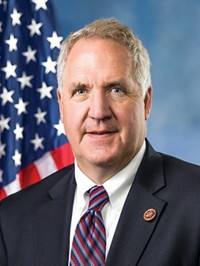Advertisement
Grab your lab coat. Let's get started
Welcome!
Welcome!
Create an account below to get 6 C&EN articles per month, receive newsletters and more - all free.
It seems this is your first time logging in online. Please enter the following information to continue.
As an ACS member you automatically get access to this site. All we need is few more details to create your reading experience.
Not you? Sign in with a different account.
Not you? Sign in with a different account.
ERROR 1
ERROR 1
ERROR 2
ERROR 2
ERROR 2
ERROR 2
ERROR 2
Password and Confirm password must match.
If you have an ACS member number, please enter it here so we can link this account to your membership. (optional)
ERROR 2
ACS values your privacy. By submitting your information, you are gaining access to C&EN and subscribing to our weekly newsletter. We use the information you provide to make your reading experience better, and we will never sell your data to third party members.
Policy
Change Is Coming
Converging forces spur modernization of U.S. chemical control law
by Cheryl Hogue
March 16, 2009
| A version of this story appeared in
Volume 87, Issue 11

TSCA—it's pronounced "Tosca," like the Puccini opera.
TSCA is the abbreviation for the Toxic Substances Control Act, a little-known law with big, sometimes operatic implications for the chemical enterprise. After all, TSCA governs commercial chemicals that are the building blocks of modern life's everyday products.
Former president Gerald Ford signed TSCA into law in 1976. Today, the statute remains essentially unchanged, a long time in an era of rapid technological development. Virtually everyone agrees that TSCA needs to be modernized, at least to some degree (C&EN, March 9, page 24).
Congress has batted about the idea of TSCA reform for the past several years. Lawmakers have held a couple of hearings and introduced legislation to update TSCA in 2005 and 2008. That bill went nowhere. Despite calls from some activists to change the law, the Bush Administration, backed by the chemical industry, insisted that the statute was effective and needed no revision.
Now it looks like TSCA is ready for Act II.
Political momentum for a rewrite of this law is reaching critical mass. Key leaders in the U.S. Senate and House of Representatives are backing their calls for changes to TSCA with in-depth hearings.
Meanwhile, advocacy groups—beyond just a few national environmental organizations—are joining the movement for TSCA reform. Unions representing chemical plant workers are chiming in. Animal welfare advocates see an opportunity to push health and safety testing of chemicals away from studies that rely on laboratory animals to methods involving genomics and cell-based technologies.
New to the TSCA policy debate are businesses that purchase items made from chemicals. They want the law revised so they can more easily get health and safety data for substances in the products they buy.
The chemical industry has been reading the tea leaves and has dropped its wholesale resistance to TSCA reform. Major trade associations are endorsing at least some changes to the law. The American Chemistry Council, which represents large chemical manufacturers, is even calling for the Environmental Protection Agency to take on a new role: determining the safety of chemicals for particular uses. Currently, the agency only assesses chemicals' risk by examining health hazard and exposure data.
An array of forces is behind this momentum for modernizing TSCA. The most obvious is the European Union's program for the Registration, Evaluation, Authorization & Restriction of Chemicals (REACH). The impacts of this new legislation are reverberating through supply chains the world over. Under REACH, chemical manufacturers are significantly increasing the amount of health, safety, and environmental data available about their substances. In contrast, EPA has struggled for decades to get small amounts of this sort of information under TSCA.
For this reason, REACH has gotten the attention of U.S. lawmakers. To a lesser degree, so has Canada's effort to tighten regulation of chemicals that are harmful to human health and the environment. Some in industry view the Canadian program as a more reasonable model for a TSCA rewrite than REACH.
Meanwhile, in lieu of federal regulation of problematic chemicals, several U.S. states in recent years have acted on their own. Last year, California adopted legislation to encourage the phaseout of toxic compounds in consumer products and development of more environmentally friendly chemicals. States and localities are banning substances, such as certain brominated flame retardants. This patchwork of state and local laws is causing headaches for suppliers of finished products, as well as for makers of bulk chemicals.
DRIVING THE ACTIONS of the EU, Canada, and some U.S. states is the science on chemicals that has emerged since TSCA was enacted. For instance, in the 1990s, researchers began to realize that at levels once thought to be inconsequential, some chemicals could interfere with the body's hormones. Such disruption may cause adverse changes during critical life stages, particularly fetal development. Meanwhile, the new field of biomonitoring is detecting industrial chemicals in people's blood and urine, albeit often at trace levels. These findings challenge long-held assumptions that the general public has little or no exposure to many commercial substances.
In addition, a force atypical in environmental policy debates is boosting political momentum for a rewrite of the U.S. chemical control law. A persistent push for a TSCA overhaul is coming from the Government Accountability Office, Congress's investigative agency. GAO critically assessed the statute in a 2005 report (GAO-05-458) and found the law wanting. Earlier this year, GAO added TSCA programs to its list of federal programs in greatest need of reform (C&EN, Feb. 2, page 23).
The Obama Administration hasn't weighed in on the TSCA debate yet. However, there are indications that the appointees of a president who ran on a platform of change will call for a rewrite of this law. In a January memo sent to EPA employees just after she was sworn in as their new boss, agency Administrator Lisa M. Jackson declared, "It is now time to revise and strengthen EPA's chemicals management and risk assessment programs."
As Congress has just begun a series of hearings on TSCA, it's too early to confidently predict what the modernized version of the law will look like. But it's likely that it will be no more than a year or two, perhaps only months, before the U.S. has a revised law that will affect the chemical enterprise for decades to come.
Views expressed in this Insights are those of the author and not necessarily those of ACS.




Join the conversation
Contact the reporter
Submit a Letter to the Editor for publication
Engage with us on Twitter